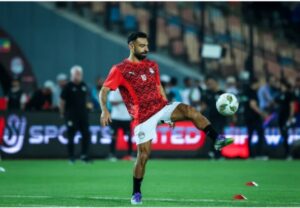
The Carolina Panthers’ packed wide receiver room needs to be turned into a powerful offensive weapon by Dave Canales…see more.
The 2025 NFL season brings a new chapter for the Carolina Panthers, one defined by change, opportunity, and a sense of urgency. At the center of this transformation is new head coach Dave Canales, a respected offensive mind with a proven track record in quarterback development and offensive rejuvenation. With quarterback Bryce Young entering a crucial developmental year, Canales’ top priority is turning potential into production. A key to this will be unlocking the full capabilities of the Panthers’ packed but underperforming wide receiver room.
On paper, Carolina’s wide receiver group is deep, varied, and brimming with untapped potential. But talent alone doesn’t win games. Turning this crowded position group into a consistent, explosive unit is both a challenge and an opportunity — one that Canales must embrace head-on to reignite the Panthers’ offense.
The 2024 season was tough for the Panthers. The team lacked consistent offensive firepower, finishing among the worst in most key passing metrics. Much of the blame fell on the receiving corps, which struggled with separation, drops, and inconsistent route running. However, a closer look reveals a group that was more underutilized than untalented.
The Panthers’ current receiver room includes:
Adam Thielen: The veteran led the team in receptions last season and provided a reliable safety valve for Bryce Young. But at 34, he’s not the game-breaking threat he once was. His value now lies in savvy route running, leadership, and red zone production.
Jonathan Mingo: A second-round pick in 2023, Mingo has the physical tools — size, speed, and strength — but has yet to fully translate that into consistent NFL production. He profiles as a potential WR2 or WR3, if developed properly.
Xavier Legette: Drafted in the first round in 2024, Legette brings raw athleticism, YAC (yards after catch) ability, and vertical speed. However, his route tree and experience against elite competition remain limited.
DJ Chark: A burner when healthy, Chark provides a vertical element that can stretch defenses. Durability remains a concern, and he has struggled with consistency.
Ihmir Smith-Marsette and Terrace Marshall Jr.: Depth players who have flashed in limited roles but are still fighting for regular snaps.
It’s a diverse group: veterans, deep threats, big-bodied targets, and developmental upside. But diversity must translate into defined roles and chemistry within the offense. That’s where Canales comes in.
Before taking the reins in Carolina, Dave Canales served as the offensive coordinator for the Tampa Bay Buccaneers, where he helped revive Baker Mayfield’s career and guide the team to a playoff berth. Before that, he played a key role in developing Russell Wilson in Seattle and helped Geno Smith turn around his career. His offensive philosophy blends west-coast principles with modern spread concepts, emphasizing timing, rhythm, and play-action.
Canales’ offenses don’t rely on having a true WR1 but instead focus on balance, mismatches, and maximizing each player’s strengths. That bodes well for a Panthers team without a clear alpha receiver. His system favors quick reads, timing routes, and pre-snap motion — all designed to make life easier for the quarterback.
Let’s explore how Canales can leverage his scheme and coaching acumen to unleash the potential in this crowded receiver room.
One of the main issues last year was unclear roles. Multiple receivers were playing interchangeable positions, leading to confusion and inefficiency. Canales must bring structure.
Adam Thielen should be the primary slot receiver. His route-running precision, hands, and football IQ make him ideal for third downs and intermediate work. Let him be a possession receiver and red-zone technician, not a volume wideout.
Xavier Legette should be developed as the X receiver — the go-to perimeter target. His frame and speed give him the potential to dominate outside. Early usage in designed screens and go routes can build confidence and simplify his learning curve.
DJ Chark works best as a situational deep threat. His role should be similar to that of Tyler Lockett in Seattle — stretching the defense vertically and capitalizing on play-action.
Jonathan Mingo may be most effective as a moveable Z receiver or big slot. He can line up in bunch sets, motion across the formation, and attack mismatches on safeties and linebackers.
By giving each receiver a clear, defined purpose, Canales can maximize efficiency and eliminate redundancy.
Canales’ history shows he excels at building systems around quarterback strengths. For Bryce Young, that means:
Clean reads
Quick decisions
Building rhythm through short to intermediate passes
The receiver room needs to reflect this. Instead of complicated route combinations that require long development time, Canales should prioritize:
Option routes in the middle of the field (especially for Thielen and Mingo)
Play-action deep shots (ideal for Legette and Chark)
Pre-snap motion to reveal coverages and create leverage
Crossing patterns to use the receivers’ athleticism and minimize contested catches
Young’s touch and anticipation are elite when he’s in rhythm. Canales’ job is to use his receivers to get him there quickly and consistently.
In both Seattle and Tampa Bay, Canales found creative ways to scheme YAC opportunities — particularly through screens, rub routes, and motion.
Xavier Legette thrives with the ball in his hands. Bubble screens, tunnel screens, and drag routes can give him space to operate and build confidence.
Mingo and Chark can be used on deep crossers and shallow drags, where they can use their size and speed to turn short passes into big gains.
Even Thielen, while not explosive, can still find soft spots in zones and pick up extra yards after the catch through timing and awareness.
Canales’ emphasis on spacing and tempo can help turn this offense from stagnant to slippery
Carolina struggled mightily in the red zone last season. Receivers failed to create separation, and the play-calling was often uninspired. Canales can change that.
Thielen is a red zone technician. His footwork, body control, and chemistry with the quarterback make him a high-value target near the goal line.
Legette and Mingo offer size and physicality for fades and back-shoulder throws.
Tight ends and RBs can also be used to open up space for receivers through pick plays and layered concepts.
Canales’ red zone philosophy in Tampa Bay relied on motion and misdirection. Expect similar tactics in Carolina to get receivers open without relying purely on 1-on-1 wins.
A “crowded” room is a double-edged sword. On one hand, it means depth and potential. On the other, it can lead to inconsistency if not managed properly. Canales must instill a culture of competition.
If Terrace Marshall Jr., Ihmir Smith-Marsette, or even a rookie free agent outplays a higher-profile name in camp, they must earn snaps. Canales’ no-nonsense, team-first approach fits well here.
Wide receiver by committee doesn’t mean equal touches — it means the best matchups get exploited each week, and no one is handed a role based on pedigree alone.
Dave Canales’ hiring wasn’t just about jump-starting Bryce Young — it was about building a cohesive, dynamic offense. The wide receiver room, while full, represents one of the biggest levers he can pull to do just that.
If used correctly, this group doesn’t need a bona fide No. 1. Instead, it can become a versatile, matchup-proof unit that wins through scheme, precision, and balance. Defined roles, simplified concepts, and creative play-calling can unlock the potential this room has long hinted at.
The Panthers’ offense is a work in progress. But under Canales, the transformation of the wide receiver room could be the first big step toward a brighter — and more explosive — future







